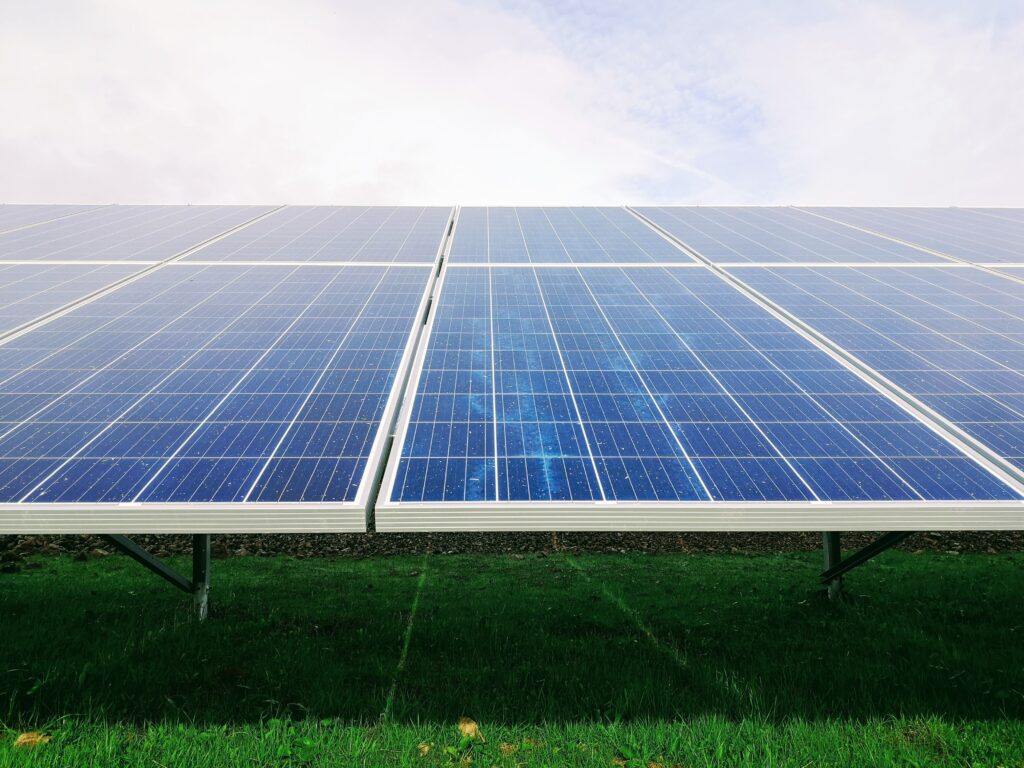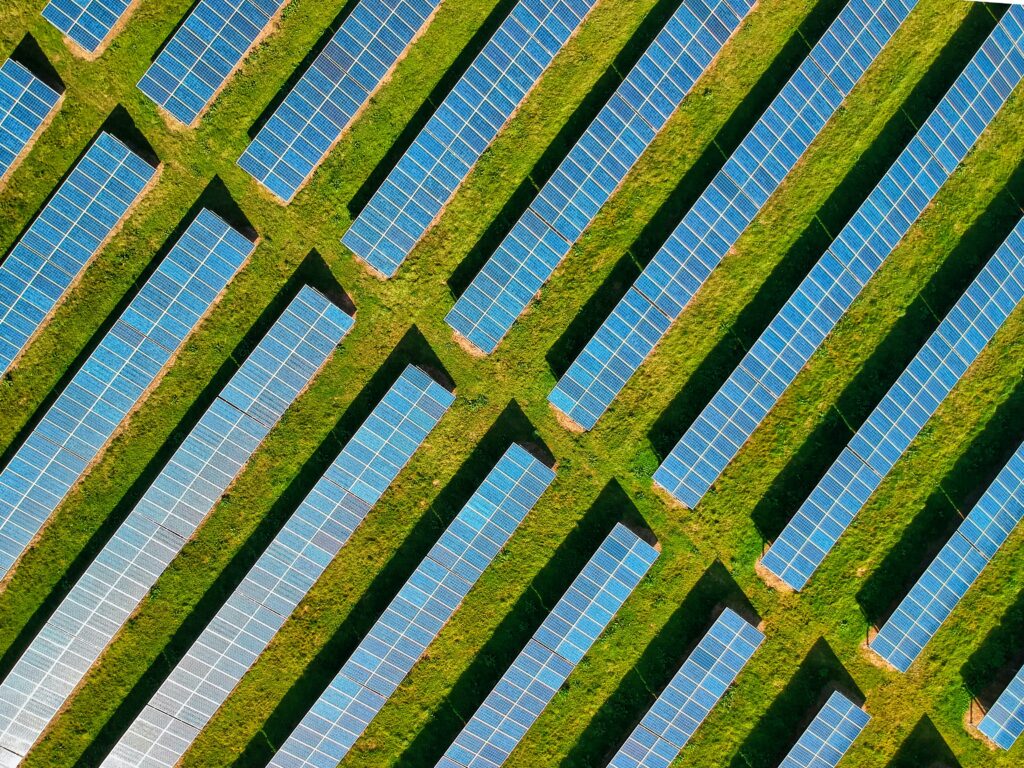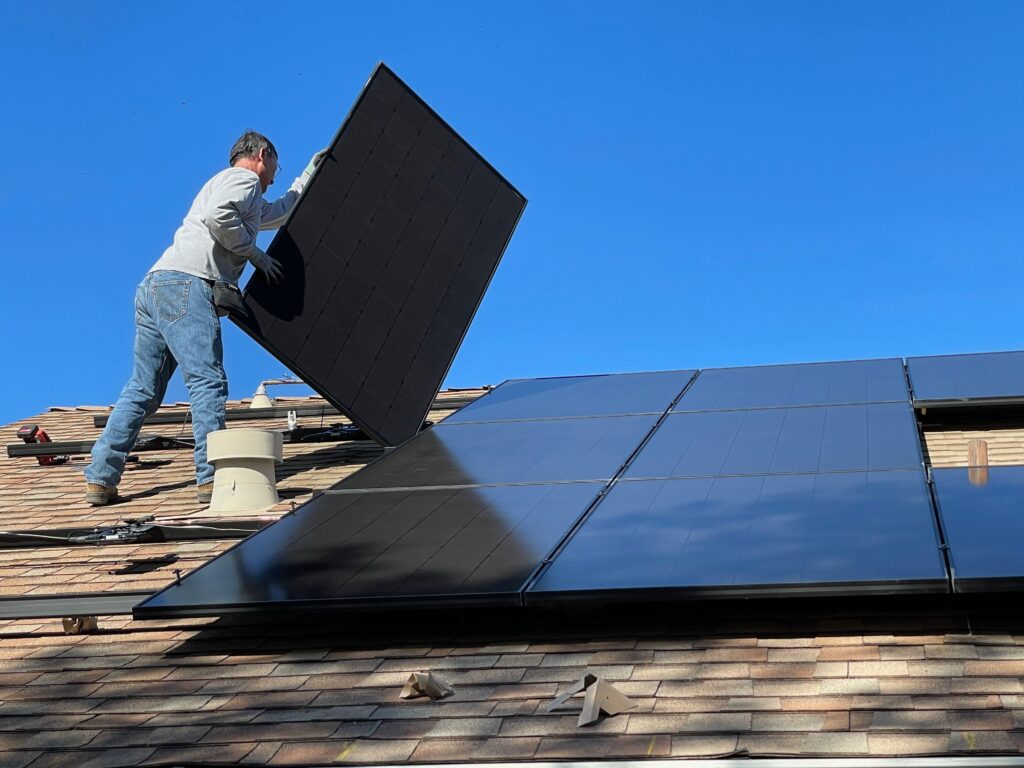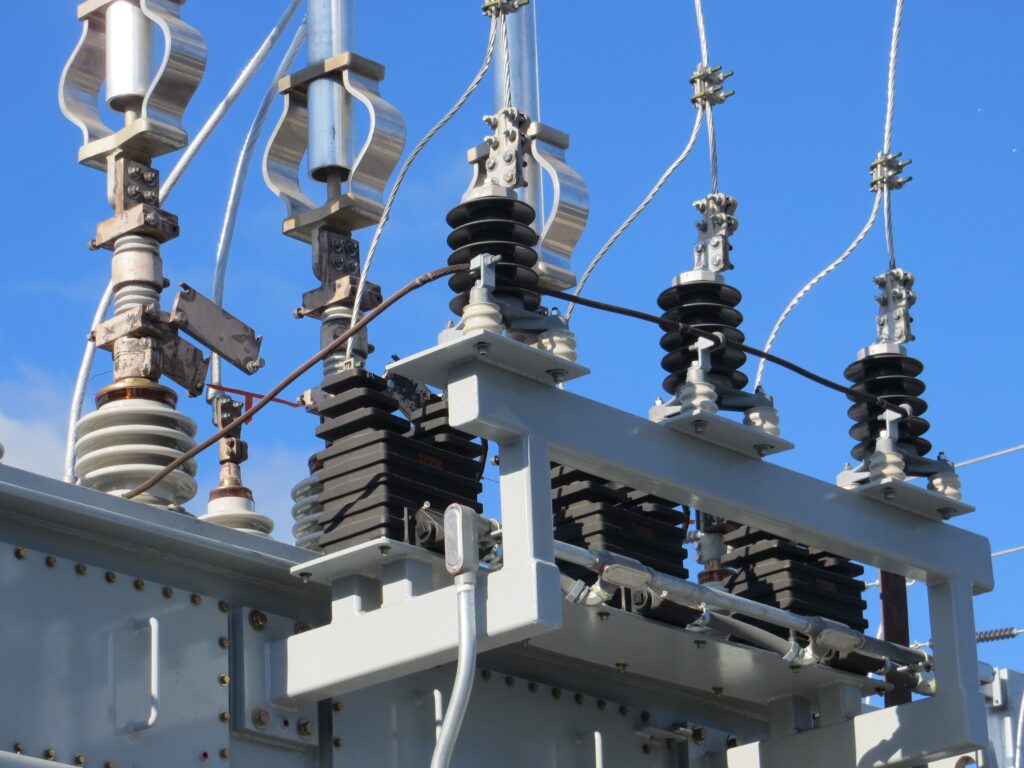Imagine never having to worry about losing power during a blackout or paying high electricity bills. With the increasing popularity of solar energy, many homeowners are now considering installing solar generators to power their houses. But how long can a solar generator actually run a house? This article explores the answer to this crucial question, providing valuable insights into the capabilities of solar generators in sustaining a household’s energy needs. Discover the untapped potential of solar energy and understand how it can revolutionize the way we power our homes.

Understanding Solar Generators
Definition of a Solar Generator
A solar generator is a device that converts solar energy into electrical energy, providing an environmentally-friendly and renewable power source. Unlike traditional generators that rely on fuel, solar generators harness the power of the sun by using solar panels to capture sunlight and convert it into electricity. These generators are versatile, portable, and can be used in a variety of settings, including homes, businesses, and outdoor activities.
How a Solar Generator Works
Solar generators work by utilizing the process of photovoltaics, which involves converting sunlight into electricity. The generator consists of several key components, including solar panels, a battery, an inverter, and a charge controller.
Solar panels are responsible for capturing sunlight and converting it into direct current (DC) electricity. These panels are typically made up of multiple solar cells, each containing a semiconductor material that generates an electric current when exposed to sunlight.
The battery plays a vital role in a solar generator by storing the electricity generated by the solar panels. This enables the system to provide power even when the sun is not shining. Batteries used in solar generators are often deep-cycle batteries, designed to handle continuous recharging and discharging.
The inverter converts the DC electricity produced by the solar panels and stored in the battery into alternating current (AC) electricity, which is the type of electricity commonly used in households. This enables the solar generator to power various appliances and devices.
The charge controller regulates the charging of the battery, preventing overcharging or discharging, and optimizing the overall efficiency of the system. It ensures that the battery is charged correctly and prevents any potential damage caused by improper charging.
Types of Solar Generators
There are several types of solar generators available, each with its own advantages and limitations. The most common types include portable solar generators, solar backup systems, and solar-powered home systems.
Portable solar generators are compact, lightweight, and designed for convenient use during outdoor activities or in situations where access to electricity is limited. These generators are easily transported and provide a reliable power source for camping, hiking, and other off-grid adventures.
Solar backup systems are intended to provide emergency power during blackouts or power outages. These systems are usually installed in homes or businesses and can be connected to the existing electrical system. When a power outage occurs, the solar backup system automatically switches on, utilizing the stored solar energy to power essential appliances and keep the lights on.
Solar-powered home systems are larger-scale installations designed to provide a significant portion of a household’s energy needs. These systems often consist of a combination of solar panels, batteries, and an inverter. They can generate enough electricity to power most, if not all, household appliances and can significantly reduce or eliminate the need to rely on the grid for electricity.
Components of a Solar Generator
Solar Panels
Solar panels are the primary component of a solar generator, responsible for capturing sunlight and converting it into electricity. These panels are typically made up of multiple solar cells, which are connected and arranged in a grid-like pattern. The solar cells contain a semiconductor material, such as silicon, that creates an electric current when exposed to sunlight. The size and number of solar panels in a solar generator can vary depending on the desired power output.
Battery
The battery in a solar generator is responsible for storing the electricity generated by the solar panels and making it available for use when needed. Deep-cycle batteries, commonly used in solar generators, are designed to handle the continuous charge and discharge cycles. The capacity of the battery determines how much energy can be stored, and it is essential to choose a battery with sufficient capacity to meet the household’s energy needs.
Inverter
An inverter is a critical component of a solar generator as it converts the DC electricity produced by the solar panels and stored in the battery into AC electricity, which is the type of electricity used in most household appliances. The inverter ensures compatibility between the solar generator and the appliances it powers, allowing for seamless operation. Inverters are available in different sizes and capacities to accommodate various power requirements.
Charge Controller
A charge controller is responsible for regulating the charging process of the battery. It ensures that the battery receives the correct voltage and current during charging, preventing overcharging or discharging. A charge controller is an essential component to extend the lifespan of the battery and optimize the overall efficiency of the solar generator.

Factors That Determine How Long a Solar Generator Can Power a House
Size of the House
The size of the house is a crucial factor in determining how long a solar generator can power it. Larger houses generally have higher energy demands, requiring more electricity to power various appliances, lighting, and other devices. In contrast, smaller houses may have lower energy consumption, allowing a solar generator to meet their needs more easily.
Energy Efficiency of the House
The energy efficiency of a house plays a significant role in determining the runtime of a solar generator. Houses that are well-insulated, have energy-efficient appliances, and utilize LED lighting can significantly reduce their energy consumption. By minimizing energy waste, an energy-efficient house can prolong the runtime of a solar generator and maximize its effectiveness.
Amount of Solar Energy Available
The amount of solar energy available in a particular location is a crucial factor in determining how long a solar generator can power a house. Areas with abundant sunlight and fewer shading obstructions have higher solar energy potential, allowing solar panels to generate more electricity. Conversely, regions with less sunlight or frequent cloudy conditions may have lower solar energy availability, reducing the overall output of the solar panels and potentially impacting the runtime of the solar generator.
Battery Capacity and Health of the Solar Generator
The capacity and health of the battery directly impact how long a solar generator can power a house. The battery’s capacity determines the amount of energy that can be stored and subsequently used. Larger battery capacities can store more energy and provide power for an extended period.
Regular maintenance and monitoring of the battery’s health are essential to ensure optimal performance. Over time, batteries can degrade or lose capacity, reducing their ability to store energy effectively. Maintaining the battery’s health through proper care and following manufacturer recommendations can help prolong its lifespan and ensure consistent power supply.
Solar Energy Storage Options
Lead Acid Batteries
Lead acid batteries have been widely used in solar energy storage due to their affordability and reliability. These batteries consist of lead plates immersed in sulfuric acid, and they are available in two main types: flooded lead acid batteries and sealed lead acid batteries. Flooded lead acid batteries require regular maintenance, including checking electrolyte levels and ensuring proper ventilation. Sealed lead acid batteries, on the other hand, are maintenance-free and do not require any specific ventilation requirements.
Lithium Ion Batteries
Lithium-ion batteries are becoming increasingly popular in solar energy storage due to their high energy density and long lifespan. These batteries offer a higher efficiency and a longer cycle life compared to traditional lead acid batteries. Lithium-ion batteries are also more compact and lightweight, making them ideal for portable solar generators. However, they tend to be more expensive than lead acid batteries.
Graphene Batteries
Graphene batteries are a relatively new development in solar energy storage technology. Graphene, a single layer of carbon atoms arranged in a lattice structure, provides exceptional conductivity and durability. Graphene batteries offer high energy density, fast charging capabilities, and a longer lifespan compared to traditional battery technologies. While still in the early stages of development, graphene batteries hold great promise for enhancing the performance and efficiency of solar generators.
Comparison of Storage Options
When choosing a storage option for a solar generator, it is essential to consider factors such as cost, lifespan, energy density, maintenance requirements, and specific energy needs. Lead acid batteries are a more affordable option, while lithium-ion batteries offer higher efficiency and longer lifespans. Graphene batteries, although still in development, have the potential to revolutionize solar energy storage with their superior performance. Each storage option has its own advantages and disadvantages, so it is crucial to evaluate them based on individual requirements.

Importance of Energy Efficiency in Prolonging Solar Generator Runtime
Energy Efficient Appliances
One of the most effective ways to prolong the runtime of a solar generator is to use energy-efficient appliances. Energy Star certified appliances are designed to consume less energy without sacrificing performance. By replacing outdated, energy-intensive appliances with energy-efficient alternatives, you can significantly reduce your household’s energy consumption and maximize the effectiveness of your solar generator.
Insulation and Weatherization
Proper insulation and weatherization of your house play a crucial role in energy efficiency. Well-insulated walls, ceilings, and floors help to maintain a stable indoor temperature, reducing the need for heating or cooling. Weatherstripping windows and doors and sealing any air leaks can further enhance the energy efficiency of your home. By minimizing heat loss or gain, you can lessen the demands on your solar generator and extend its runtime.
LED Lighting
Replacing traditional incandescent bulbs with LED lighting is a simple yet effective way to improve energy efficiency. LED bulbs consume significantly less energy, have a longer lifespan, and produce less heat compared to traditional bulbs. By adopting LED lighting throughout your house, you can reduce your energy consumption and increase the runtime of your solar generator.
Efficient Heating and Cooling Systems
Heating and cooling systems are often significant energy consumers in households. By investing in energy-efficient HVAC systems, such as heat pumps or solar heating systems, you can reduce your reliance on traditional heating and cooling methods. These systems utilize renewable energy sources and consume less energy, thereby extending the runtime of your solar generator.
Typical Energy Consumption of Household Appliances
Refrigerator
Refrigerators are one of the most energy-consuming appliances in a household, as they need to run continuously to keep perishable food items fresh. The energy consumption of a refrigerator can vary depending on factors such as size, age, and energy efficiency rating. On average, a standard refrigerator consumes around 100-600 kilowatt-hours (kWh) per year, depending on its size and efficiency.
Air Conditioner
Air conditioners are essential for maintaining indoor comfort, but they can also be energy-intensive, especially during hot summer months. The energy consumption of an air conditioner depends on several factors, including the size of the unit, energy efficiency rating, runtime, and outdoor temperature. On average, an air conditioner can consume anywhere from 500 to 1500 watts per hour of operation.
Computer
Computers are commonly used in households for various purposes, including work, entertainment, and communication. The energy consumption of a computer varies depending on factors such as the type of computer (desktop or laptop), processing power, and usage patterns. On average, a desktop computer consumes around 60-250 watts per hour, while a laptop typically consumes around 15-45 watts per hour.
Television
Televisions are a common source of entertainment in households, and their energy consumption can vary significantly depending on factors such as screen size, display technology, and usage patterns. On average, a standard LCD or LED TV consumes around 50-150 watts per hour, while larger screens or those with more advanced features may consume more.
Water Heater
Water heaters are essential for providing hot water in households, and their energy consumption can vary depending on the type of water heater (electric, gas, or solar) and the size of the tank. On average, an electric water heater can consume around 3000-5000 watts per hour, while a gas water heater may consume approximately 40000-50000 BTUs per hour.
Comparison of Energy Consumption
When considering the overall energy consumption of household appliances, it is important to note that these are average figures and can vary depending on individual circumstances. By assessing the energy consumption of each appliance in your household, you can estimate the total energy needs and determine the appropriate size and capacity of the solar generator required to meet those needs.
Estimating a Household’s Daily Energy Needs
Identifying All Energy Using Items
To estimate a household’s daily energy needs, it is crucial to identify all the appliances and devices that consume energy. This includes major appliances such as refrigerators, air conditioners, water heaters, as well as smaller devices such as computers, televisions, and lighting fixtures. Make a list of all the energy-using items in your household to ensure accuracy in estimating your energy needs.
Calculating Total Energy Consumption
Once you have identified all the energy-using items in your household, you can calculate the individual energy consumption of each item. This can usually be found on the appliance’s energy label or in the product specifications. Multiply the energy consumption (in watts) of each appliance by the average daily usage (in hours) to obtain the daily energy consumption for each item. Sum up the total energy consumption of all the items to estimate your household’s daily energy needs.
Converting Energy Consumption to Solar Panel and Battery Requirements
To determine the solar panel and battery requirements for your household’s daily energy needs, it is essential to consider factors such as solar energy availability, battery capacity, and efficiency of the solar generator. Solar panels have a rated power output, typically given in watts, which represents the amount of electricity they can produce under ideal conditions. Divide your household’s daily energy needs by the average daily solar energy availability to estimate the required solar panel capacity. The battery capacity should be large enough to store sufficient energy to meet your household’s needs during periods of low solar energy availability.
Ensuring Continuous Power Supply with Solar Generators
Designing the System for Seamless Power Supply
To ensure a continuous power supply with a solar generator, it is crucial to design the system with careful consideration of energy needs, solar energy availability, battery capacity, and usage patterns. Proper system design involves selecting the appropriate size and capacity of solar panels, batteries, inverters, and charge controllers to meet the household’s energy demands. This includes considering factors such as the expected daily energy consumption, solar energy availability, and the required battery capacity to provide power during periods of low solar energy production.
Integration with the Grid
Integrating a solar generator with the grid can provide additional benefits by allowing for seamless power supply and backup capabilities. Grid-connected solar generators can utilize the grid as a backup power source when solar energy availability is low. In this configuration, excess solar energy can be fed back into the grid, reducing reliance on the utility company and potentially earning credits or financial incentives through net metering programs. Having the ability to seamlessly switch between the solar generator and the grid ensures continuous power supply, even during extended periods of low solar energy production.
Extended Power Outages and Solar Generators
Solar Generators During Natural Disasters
Solar generators can be invaluable during natural disasters, such as hurricanes, earthquakes, or severe storms, where extended power outages are common. In these situations, traditional power sources may be disrupted, leaving households without electricity for an extended period. Solar generators provide a reliable backup power source, allowing households to maintain essential functions such as lighting, charging electronic devices, and operating critical appliances.
Capacity of Solar Generators During Extended Power Outages
The capacity of a solar generator to power a house during extended power outages depends on factors such as the size of the solar generator, the battery capacity, and the energy needs of the household. Smaller solar generators with limited battery capacity may only be able to provide power for a few hours or a day, while larger solar generator systems with higher battery capacity can sustain power for several days or even weeks. It is crucial to consider the anticipated duration of the power outage when choosing a solar generator system to ensure it meets the household’s needs.
Limitations and Challenges of Solar Generators
Weather Dependencies
Solar generators are inherently dependent on sunlight to generate electricity, which means they are subject to weather conditions. Cloudy or overcast days can significantly reduce the output of solar panels and limit the amount of electricity generated. Extended periods of inclement weather, such as during winter months or in regions with low sunlight, can pose challenges to the effectiveness and runtime of solar generators. However, proper system design, sizing, and battery capacity can help mitigate the impact of weather dependencies.
High Initial Cost
The initial cost of installing a solar generator system can be relatively high, particularly when considering the expense of solar panels, batteries, inverters, and installation. However, it is important to consider the long-term benefits and potential cost savings associated with solar energy. Over time, the reduction in electricity bills and the potential for earning credits through net metering programs can offset the initial investment cost.
Maintenance and Lifespan of Components
Like any other electrical system, solar generators require regular maintenance to ensure optimal performance and longevity. This includes cleaning and inspecting the solar panels, checking the battery health, and monitoring the overall system performance. Additionally, the lifespan of the various components, such as the solar panels and batteries, should be considered. While solar panels have a long lifespan (often 25 years or more), batteries may need to be replaced periodically, depending on their type and usage.
Limited Power Supply During Night Time
Solar generators rely on sunlight to generate electricity, which means they cannot produce power at night when the sun is not shining. However, this limitation can be overcome by coupling the solar generator with appropriate battery storage. During the day, excess solar energy can be stored in the battery, allowing for power supply during nighttime or periods of low sunlight. The battery capacity should be carefully chosen to meet the energy needs during these periods, ensuring a seamless power supply.
In conclusion, solar generators provide an environmentally-friendly and renewable power source for households and businesses. Understanding the components, operation, and limitations of solar generators is crucial in determining their effectiveness and runtime. By considering factors such as energy efficiency, energy consumption, solar energy availability, and system design, one can maximize the benefits of solar generators and ensure a continuous power supply. While solar generators have limitations and challenges, proper maintenance, system design, and integration with the grid can overcome these obstacles and provide reliable power even during extended power outages.




